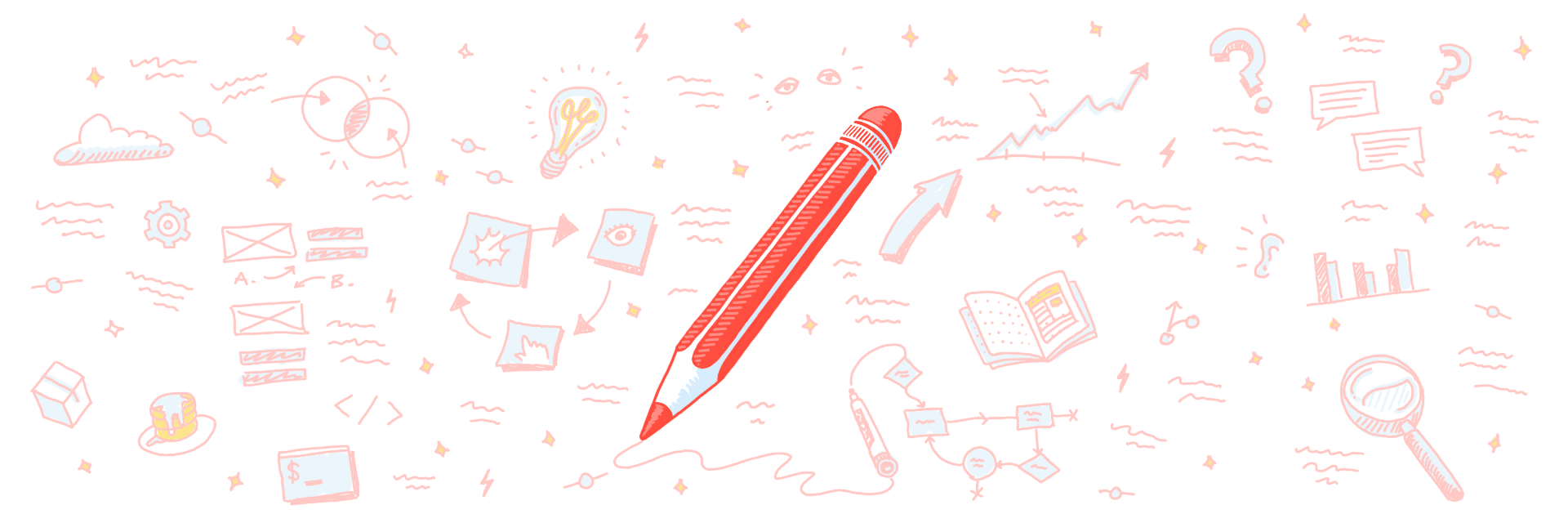I have a markerboard in my office. I also have a Macbook Air with as many prototyping and design creation apps as you can think of. But I prefer to kickoff most projects on the markerboard.
Sometimes, instead of the markerboard, I’ll even use some scrap paper - either from my printer, or from a little pile of cut up sheets of paper I have on my desk.
You’re probably thinking, “WAIT - YOU DON’T HAVE A MOLESKIN FOR YOUR SKETCHES?!?!”
Yes, of course I do. Relax. But I prefer the scrap paper over the moleskin for sketching out rough ideas.
Do you know what the markerboard and the scrap paper have in common that my Moleskin and various software applications do not?
Temporality.
They start with the assumption that what you create on them will be disposed of, not saved. I believe this is the best assumption to use when starting most projects: that your initial ideas will be disposed of, and replaced with better ones. Iterations.
They also share another common thread, related to their temporal, disposable nature: they facilitate discussion, not execution. In other words, they are about solving the “what”, not the “how”.
Too often we as designers instinctively start with execution, then worry about the content or the strategy after an idea for execution (style or visual treatment) has been established. What happens is we end up creating a visual framework first, then fitting the strategy into our design - which in reality is putting the cart before the horse.
Starting with disposable mediums lends itself to keeping initial ideas and direction to the strategic level. It facilitates the discussion that must take place before a visual framework for execution is ever considered.
Of course, they do blend together at times. Is it possible to use a disposable medium like a markerboard or scrap paper to start hashing out your visual execution? Of course.
I’m not proposing these tools should never be used for the purpose of brainstorming specific visual treatments or other execution related details. What I am advocating for are two things:
1. Start A Discussion First
View your work through the lens of a problem solver creating a solution, not just as a designer creating a visual work. Start to think of yourself as creating conceptual solutions that just happen to be manifested through a visual skin, and you’ll begin to understand the necessity of solving the problem independent of the visual design you create for the solution.
The benefit of using a tool like a markerboard or scrap paper is that it forces you to start to abstract yourself away from the design details we designers tend to get caught up in due to fidelity. The low-fi nature of those tools tends to force us to think more broadly about the solution we are trying to accomplish, as opposed to the rounded corners or drop shadows we tend to get caught up in with more hi-fidelity tools.
Either way, the point is NOT that you need to use a markerboard or scrap paper to start your projects. The point is that you need to use your conceptual thinking cap first, starting a discussion about the nature of the problem and what the solution should be like independent from the visual nature of your work.
2. Prepare Yourself To Iterate
The other benefit in tools that produce disposable work is that they help us to realize where we are in the process: the beginning. Often we stumble on a singular piece of the puzzle and try to use it to craft the rest of the solution.
In reality, there are many aspects to a good solution that must all come together to form the final product. You can no more design an entire web application based on a single button treatment than you can design an entire building from a certain style of staircase.
Far too often we treat our projects this way, finding some isolated piece of inspiration that serves to dictate the tone of the entire user experience. But in reality we need to be willing to let go of initial inspirations as the creative process uncovers challenges and solutions unique to our own project.
In short, we need to be willing to iterate - something which is much easier when we hold ideas loosely as concepts, rather than tightly as finely imagined pixel perfect Photoshop comps. There is a place for the later, but it’s seldom at the beginning of the process.
Problem Solving Thinking
Markerboard mentality is really just about problem solving thinking. That’s why it’s important.
In an age where design aesthetics are finally being taken seriously as a part of strategic business decisions, we risk our craft being taken as a mere marketing commodity if we don’t push to keep advancing it as an essential business skill.
Let us be diligent and willing to approach every problem as something to be solved, something to discuss, and something to iterate on.
